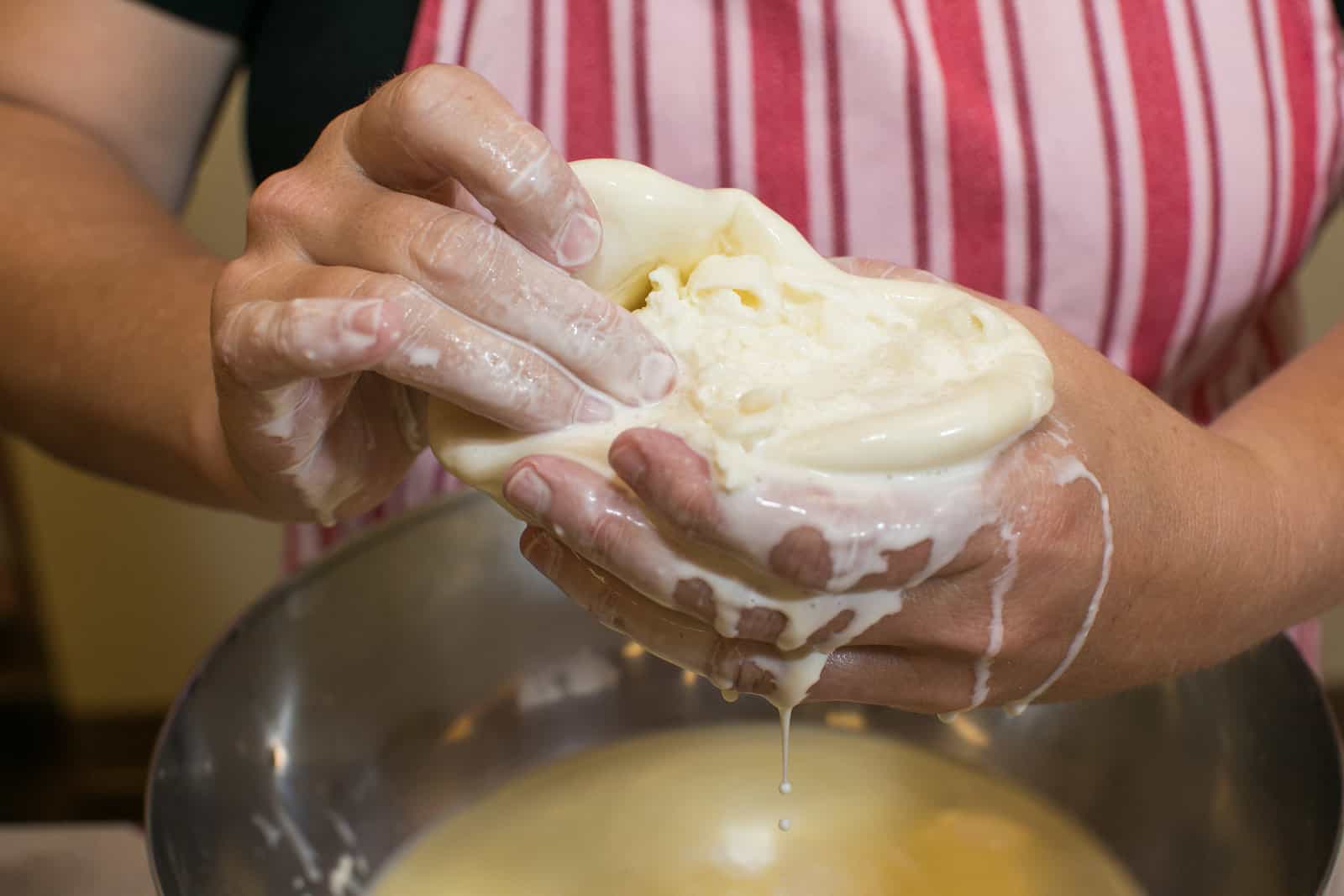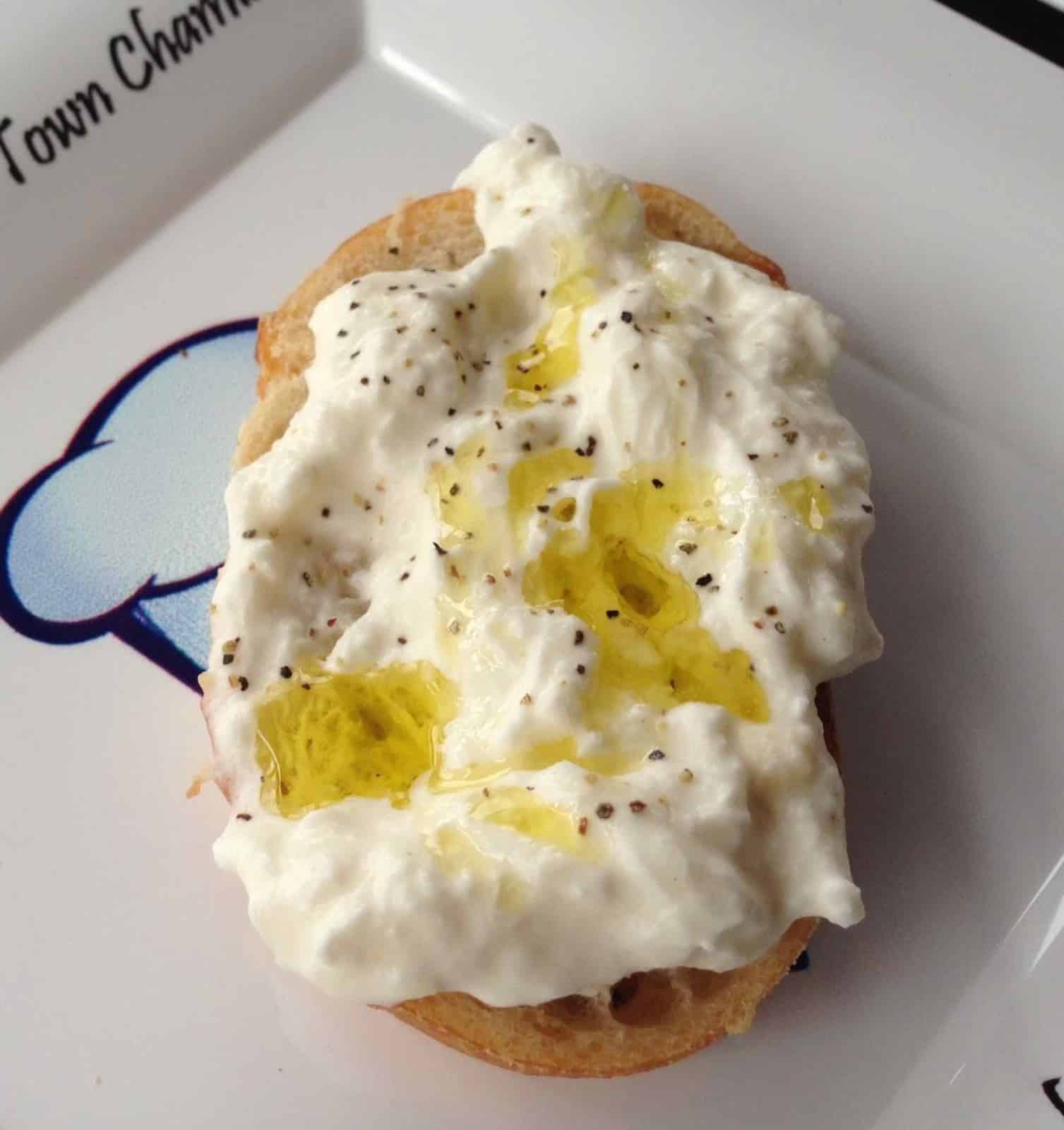
Solid or liquid? Cheese or cream? To be daintily dolloped or shoveled with a spoon? If you’re miffed by the stuff that explodes out of your burrata ball, you’re not alone.
“There’s a lot of misinformation out there in the world about stracciatella,” says Rynn Caputo of Pennsylvania-based Caputo Brothers Creamery, who crafts her own version of this ingenious creamy, cheesy mixture.
While it’s often described as nothing more than a byproduct of mozzarella-making, stracciatella is a unique cheese in itself. It originated in the town of Andria in southern Italy, Caputo says, where the local version of mozzarella was traditionally shaped into a knot instead of a ball. After a day on the shelf, unsold knots would firm up considerably—so makers undid them and peeled them apart into strings, which were then soaked in heavy cream. At some point, an anonymous brilliant human decided to tuck that cheese into more cheese—a sheet of mozzarella, specifically—forming the dumpling-esque pouch we call burrata.
Today burrata gets all the credit, but here’s the thing: It’s all about the stracciatella. “People often say to me, ‘Burrata is my favorite cheese,’ and I’m like: ‘No it’s not,’” says Caputo. The only difference between stracciatella and burrata is the thin layer of mozzarella, which “doesn’t bring much to the party,” she adds. “What you love about burrata is what’s on the inside.”
The Real Deal
The trick is to find a stracciatella made out of real cultured cheese. These days many mozzarella-makers add acid to coagulate milk, skipping the traditional step of adding bacteria and leaving it to culture over many hours. Don’t get us wrong, Stracciatella made from non-cultured mozzarella isn’t bad—it’s just a little basic. It tastes of simple milk and cream.
But in versions made from cultured mozzarella, the cheese’s living microorganisms consume the cream’s lactose, jumpstarting a fermentation process that thickens the cream as the strings tenderize. From a few hours to a few days, it evolves from a sweet, mild mix of al dente shreds to a thick, decadent paste yielding stronger flavors and a bit of umami.
While a burrata’s mozzarella pouch makes transport a bit easier, let’s face it: You’re probably going to end up cutting it open and setting the stracciatella free anyway. If you’re lucky enough to find it fresh in a local shop, try buying stracciatella solo. Dollop it onto a salad or into a soup. Layer it over a thin slice of Asian pear and drizzle with thick balsamic. Mix it into a simple tomato sauce for pasta. Or spoon it directly into your mouth—we won’t judge. Caputo sums it up: “Why eat the whole muffin when you could just eat the muffin top?”
Spoon it
The following makers are turning out stellar stracciatellas:
Caputo Brothers Creamery in Spring Grove, PA
Wolf Meadow Farm in Amesbury, MA
Di Stefano Cheese in Pomona, CA
Liuzzi Cheese in Hamden, CT
Uno Alla Volta in Charlotte, NC
Maplebrook Farm in North Bennington, VT
Photo credit Teri Pozniak





